Other than the six main Views of the editor interface that are shown by default, there are extra Views that are also very useful. We can select them by clicking on the Window menu:
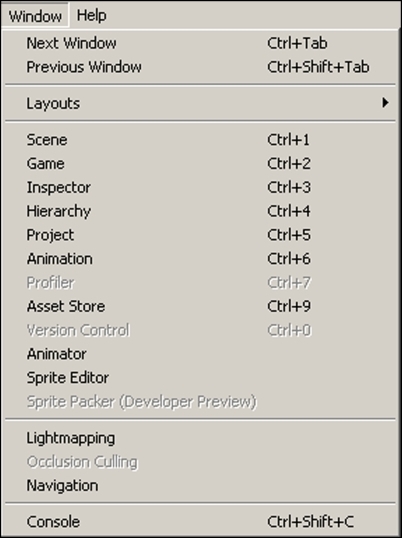
The Console View is useful when you write code to output messages and to check for any problems with the code. Any warnings and errors in the code will be displayed here.
These messages only appear to us developers to test and debug our game and will not be shown in the final game to the players. The following screenshot displays the Console View:
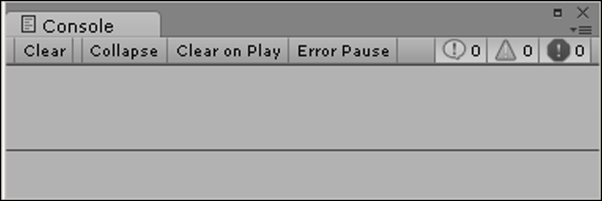
The Animation View is used to animate the GameObjects in our scene using an animation timeline with frames, as shown in the following screenshot:
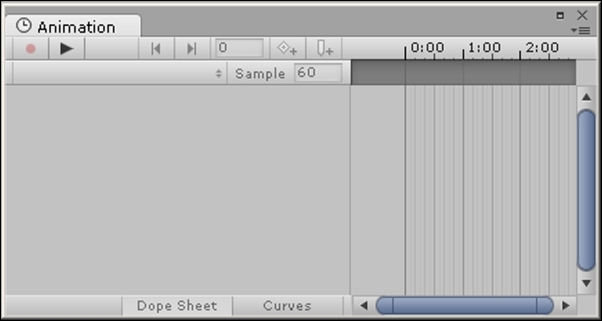
We will discuss this in great detail in the later chapters.
Sprite Editor enables us to separate merged images (known as a sprite sheet or The sprite atlas) from a single image (or sprite as it is often called in the world of 2D). It is useful, for example, for animations and when we want different parts of our character to move independently, as shown in the following screenshot:
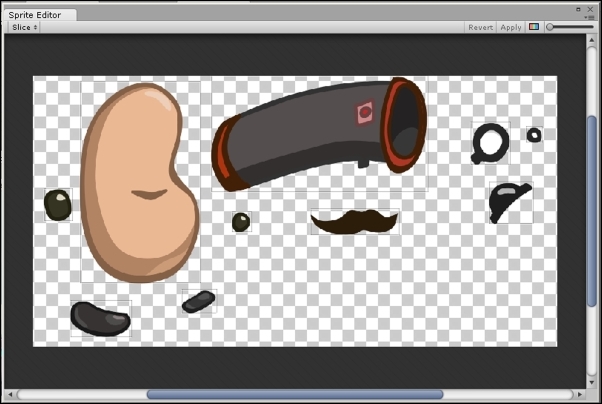
Animator controls the order of an animation. It provides an easy way to set up animations by visually representing the flow of the animation, such as the completion of a jump animation leading to a standing animation. It enables us to create animation states. We can then order the flow of animations and decide when one animation state transitions or blends into the next state, as shown in the following screenshot:
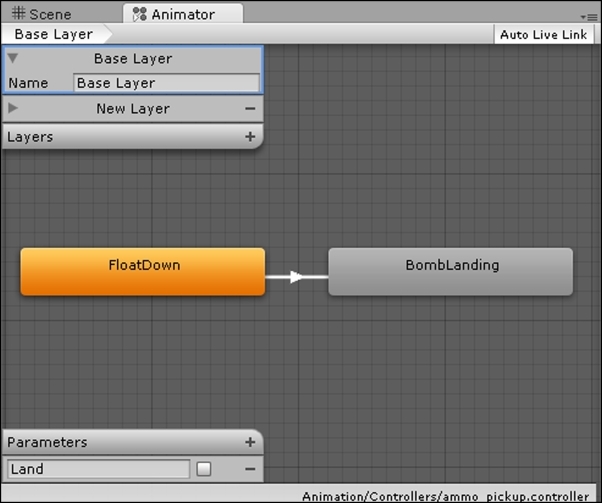
Profiler (a feature that comes with the Pro version) is used to check on a game's performance (how fast it runs) and on what could be slowing it down with regards to memory usage, object count (total objects), draw calls, and so forth. Different things can slow down a game, such as too many sprites on the screen at the same time, very complex AI or scripts, and so on.
The standard benchmark for a game is to run at 60 FPS (frames per second). It is recommended that anything less than this should be optimized and improved. This ideal frame rate varies from genre to genre and platform to platform. For instance, an RPG game is generally acceptable at 30 FPS, whereas a racing game is best at 60 FPS.
The following is a screenshot of Profiler:
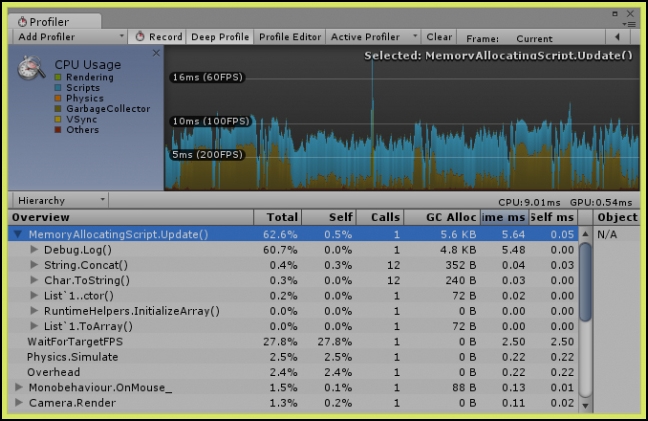
Unity Profiler, viewed 25 June 2014, http://www.gamasutra.com/blogs/WendelinReich/20131119/203842/C_Memory_Management_for_Unity_Developers_part_2_of_3.php



